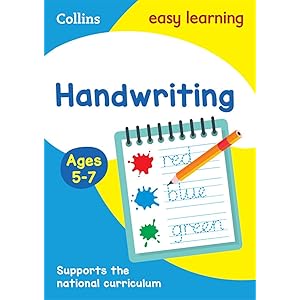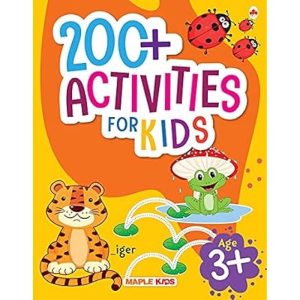Description
Handwriting development for children ages 5-7 is an exciting process as it bridges the gap between early fine motor skills and more fluent, legible writing. Here’s a breakdown of what handwriting typically looks like during these ages:
### **Ages 5-6: Early Writing Skills**
At this stage, children are still refining their fine motor control and developing muscle strength and coordination needed for writing.
– **Letters**: Children start with basic shapes and letter formations. They may use larger, simpler forms of letters and may not yet be consistent in size or spacing.
– **Uppercase letters**: These are usually easier for children to write at this stage, so most children begin by practicing capital letters.
– **Lowercase letters**: Some children may begin to attempt lowercase letters, but they may struggle with consistent shapes or size.
– **Grip**: A child’s grip will typically be transitioning from a fisted or inefficient grip to a more mature tripod grasp (holding the pencil between the thumb, index, and middle fingers). However, the grip may still be somewhat loose or awkward.
– **Letter Formation**: Letter formation is still inconsistent, and letters may be written from bottom to top or in random directions.
– **Inconsistent Size**: Children at this stage often write letters that vary greatly in size and may struggle with alignment on lines.
– **Reversals**: Reversing letters like “b” and “d” or “p” and “q” is common at this age. This is part of normal development and usually resolves with more practice.
– **Spelling and Spacing**: Children may attempt to spell simple words, but spelling errors are common. The space between words might be inconsistent, or words may run together.
### **Ages 6-7: Refining Skills**
By this age, children are gaining more control over their fine motor skills, which means handwriting should be becoming more legible and consistent.
– **Letter Formation**:
– **Uppercase and lowercase**: Children begin to write lowercase letters with more consistency and accuracy. The size and shape of letters become more uniform.
– **Letter Reversals**: While some children might still reverse letters, these occurrences decrease over time.
– **Cursive Writing**: Some children may start learning cursive at this age, although this depends on the school curriculum.
– **Grip**: The pencil grip should be more mature by age 7, and children typically have better control of the pen or pencil.
– **Size and Spacing**:
– Children start learning to write on lined paper, and their letters become more aligned to the lines.
– The size of the letters becomes more consistent, with each letter fitting within the baseline and top-line boundaries of the writing space.
– Word spacing improves, and words are less likely to run together.
– **Writing Speed**: Writing becomes faster as children practice and gain confidence, though it may still be somewhat slow compared to adults.
### **Key Milestones**
– **Fine Motor Coordination**: Children continue to strengthen the small muscles in their hands and fingers, which directly influences handwriting.
– **Legibility**: Handwriting starts to look more neat and legible as the child practices regularly.
– **Writing Familiar Words**: Children can begin to write their names, some basic sight words, and simple sentences with more accuracy.
### **Tips to Support Handwriting Development**
– **Practice Proper Pencil Grip**: Encourage the correct tripod grip for better control of the pencil.
– **Letter Formation Practice**: Use worksheets or tracing activities to help children learn proper letter formation.
– **Use Lined Paper**: Paper with dotted lines or specific spacing can help children with letter sizing and alignment.
– **Play with Fine Motor Activities**: Encourage activities like drawing, cutting with scissors, or building with blocks to strengthen the hand muscles.
– **Praise Progress**: Focus on improvements rather than mistakes to keep the child motivated.
By age 7, children’s handwriting is usually much more legible and consistent, but they will still need practice to perfect their skills.





Reviews
There are no reviews yet.